Kongo: Power and Majesty at the Met
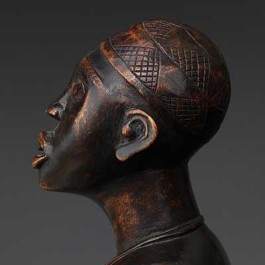
Kongo: Power and Majesty
25 images
A selection of Central African power figures, elegantly carved ivories and finely woven textiles from the 15th to early 20th centuries, as featured in the current exhibition at The Met.
- A Map of the Kingdom of Congo, after a Drawing by Filippo Pigafetta (Italian, ca. 1533–1604) and Duarte Lopes (Portuguese, active late 16th century) Engraving from Pigafetta and Lopes, Regnum Congo, hoc est, Vera descriptio regni Africani (Frankfurt), Scheide Library, Princeton University Library
- Luxury Cloth (detail) , 16th–17th century, inventoried 1659, Angola; Republic of the Congo, Kongo peoples, Raffia, Kunst und Wunderkammer des Christoph Weickmann, Ulmer Museum, Ulm, Germany. Made up of twelve individual panels with an added fringe. According to descriptions of the Loango court, members of a nobleman’s entourage spread such large textiles on the ground for him to sit upon when gathered with others before the king.
- Luxury Cloth (detail) , 16th–17th century, inventoried 1659, Angola; Republic of the Congo, Kongo peoples, Raffia, Kunst und Wunderkammer des Christoph Weickmann, Ulmer Museum, Ulm, Germany
- Mat, 19th–early 20th century, Republic of the Congo; Cabinda, Angola, Kongo peoples, Fiber, pigments, 28 11/16 × 50 3/8 × 1/8 in. (72.9 × 128 × 0.3 cm), Royal Museum for Central Africa, Tervuren, Belgium
- King Garcia II of Kongo Greets Capuchin Missionaries Engraving from Giovanni Antonio Cavazzi and Fortunato Alamandini, Istorica descrittione de’ tre regni Congo, Matamba, et Angola (Bologna), p. 336, Library Gigi Pezzoli, Milan
- Cushion Cover, 17th–18th century, inventoried 1737, Angola, Republic of the Congo, Kongo peoples, Raffia, 21 1/4 in. (54 cm) × 21 1/4 in. (54 cm), Nationalmuseet, Copenhagen
- Two Young Women, Early 20th century, postcard; The Metropolitan Museum of Art, New York, Holly W. Ross Postcard Collection ( PC320) (TR.227.12.2014)
- Master of Kasadi, Seated Female Figure with Child, 19th century (before 1898), Kongo peoples, Yombe group, Wood, glass, kaolin; Height: 10 13/16 in. (27.5 cm), The Metropolitan Museum of Art, New York, James J. and Laura Ross, New York (TR.103.2.2014)
- Ceramic Vessel Fragment, ca. 1530-50 (late Iron Age), Kongo peoples, H. 1 3/4 × W. 1 3/4 × D. 3/4 in. (4.4 × 4.4 × 1.9 cm), The Metropolitan Museum of Art, New York, Collection of Dr. James Denbow, University of Texas at Austin (LBO,305,40-50) (SL.2.2015.9.2)
- Power Figure (Nkisi N’Kondi: Mangaaka), 19th century, inventoried 1912, Chiloango River region; Republic of the Congo; Angola, Cabinda, Kongo peoples, Yombe group, Wood (Vitex thonneri De Wild.), iron, resin, cowrie shell, animal hide and hair, ceramic, plant fiber, textile, pigment, H. 52 in. (132 cm), W. 19 1/4 in. (49 cm), D. 13 3/4 in. (35 cm). Royal Museum for Central Africa, Tervuren, Belgium
- Power Figure (Nkisi N’Kondi: Mangaaka) detail, 19th century, Kongo peoples; Yombe group, Wood, paint, metal, resin, ceramic; H. 46 1/2 in. (118 cm), W. 19 1/2 in. (49.5 cm), D. 15 1/2 in. (39.4 cm) The Metropolitan Museum of Art, New York, Purchase, Lila Acheson Wallace, Drs. Daniel and Marian Malcolm, Laura G. and James J. Ross, Jeffrey B. Soref, The Robert T. Wall Family, Dr. and Mrs. Sidney G. Clyman, and Steven Kossak Gifts, 2008 (2008.30)
- Figure: Kneeling Female with Child, Dog and Vessel, 19th – early 20th century [accessioned 1930], Kongo peoples, Yombe group, Wood; H: 12 5/8 in. (32 cm), The Metropolitan Museum of Art, New York, Horstmann Collection. (K.073)
- Prestige Bell With Bird, 19th century, Kongo peoples, Wood; Overall: 5 1/4 × 2 1/2 × 1 7/8 in. (13.3 × 6.4 × 4.8 cm), The Metropolitan Museum of Art, New York, Private Collection (TR.326.2a, b.2014)
- Mask, 19th–early 20th century, Democratic Republic of the Congo; Republic of the Congo; Cabinda, Angola, Kongo peoples; Yombe group, H. 11 13/16 in. (30 cm), W. 6 3/4 (17.1 cm), D. 5 1/2 in. (14 cm), Steven Kossak, The Kronos Collections, New York
- Mask, 19th–early 20th century, Republic of the Congo; Cabinda, Angola, Kongo peoples; Yombe group, H. 9 in. (22.9 cm), W. 6 5/8 in. (16.8 cm), D. 4 1/8 in. (10.6 cm), Credit Line: Kimbell Art Museum, Fort Worth
- Knife Handle: Standing Female Captive, 19th–early 20th century, Cabinda, Angola; Republic of the Congo, Kongo peoples, Ivory, metal, H. 7 in. (17.8 cm), W. 1 7/8 in. (4.8 cm), D. 2 1/8 in. (5.4 cm), Private collection
- Carl Friedrich Wilhelm Robert Visser (German, 1860–1937), Ivory Sculptor, Photograph [c.1890-1900] Postcard [c.1905], The Metropolitan Museum of Art, New York, Holly W. Ross Postcard Collection (PC274) (TR.227.4.2014)
- Tusk with Figurative Relief (detail), ca. 1880-1890, Republic of the Congo; Cabinda, Angola, Kongo peoples, Ivory, H. 27 in. (68.6 cm), Collection of Drs. Daniel and Marian Malcolm, Tenafly, New Jersey
- Oliphant, 16th century, Republic of the Congo; Cabinda, Angola, Kongo peoples, Ivory, L. 15 3/4 in. (40 cm), Diam. 2 3/8, Museu Nacional de Arte Antiga, Lisbon. Much esteemed for their size and strength, elephants ranked highly among royal icons. Their precious ivory marked the status of royal wives, who had the right to wear ivory arm rings.
- Oliphant, 16th century, inventoried 1553, Republic of the Congo; Angola, Kongo peoples, ivory, H. 32 5/8 in. (83 cm), Diam. 3 in. (7.5 cm), Palazzo Pitti, Museo degli Argenti, Florence (Bg. 1879 avori, n.2). This trumpet carved from precious ivory is among the earliest creations sent from sub-Saharan Africa to Europe. A purely decorative presentation piece, it likely entered the Medici collections in Florence as a token of appreciation from the Kongo sovereign Afonso I (r. 1509–42) to Pope Leo X (r. 1513–21), the former Giovanni di Lorenzo de’ Medici, for appointing his son Henrique a bishop.
- Prestige Cap (mpu), 18th century [inventory 1796], Kongo peoples, Raffia or pinneapple fiber, leopard claws; H: 10 1/16 in. (25.5 cm), The Metropolitan Museum of Art, New York, The National Museum of Scotland, Edinburgh (1956.1153) (K.033)
- Prestige Cap (Mpu Ntando?), 19th century, inventoried ca.1875, Loango Coast; Cabinda, Angola; Republic of the Congo, Kongo peoples, Raffia or pineapple fiber, Ethnologisches Museum, Staatliche Museen zu Berlin (IIIC382). A type of crown known as an mpu remained a key regional attribute of political authority and social rank into the late twentieth century.
- Basket, 19th century, inventoried 1897, Cabinda, Angola, Kongo peoples, Fiber, wood, pigment, H. 8 5/8 in. (22 cm), Diam. 8 5/8 in. (22 cm), Museu da Ciência da Universidade de Coimbra, Portugal
- Garment (Nkutu), 19th century, inventoried 1897, Cabinda, Angola, Kongo peoples, Pineapple fiber (Ananas sativus Schult.), sedge fiber (Cyperus rotundus Linn.), pigment, H. 25 5/8 in. (65 cm), W. 39 in. (99 cm), Museu da Ciência da Universidade de Coimbra, Portugal.
- Figure of Christ, 18th–19th century, Kongo peoples, brass; H. 4 3/8 x W. 4 1/2 x D. 7/8 in. (11.1 x 11.4 x 2.2 cm) The Metropolitan Museum of Art, New York, Gift of Ernst Anspach, 1999 (1999.295.3)
The exhibition ‘Kongo: Power and Majesty’ at the Metropolitan Museum, New York, 18 September 2015 – 3 January 2016, tells the little known story of the earliest encounters between expansionary western trading powers and the kingdoms of the Central African coast. Over one hundred and forty works from over fifty institutional and private collections are on show, many acquired by wealthy merchants in the 16th – 19th centuries.
A review of the exhibition by Duncan Clarke will appear in HALI 186, an extract follows below.
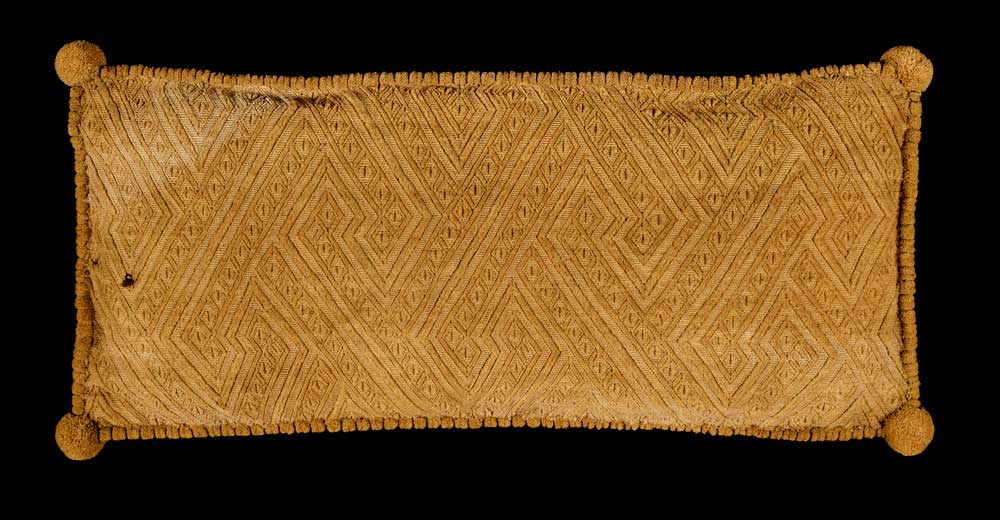
Luxury Cloth Cushion Cover, 16th–17th century, inventoried 1674, Angola, Republic of the Congo, Kongo peoples, Raffia, 20 7/8 x 9 in. (53 x 23 cm), British Museum, London. Pattern in relief formed from areas of cut pile and uncut supplementary weft surfaces.
‘The Portuguese navigator Diogo Cão planted a limestone monument at the mouth of the Congo River in 1483, inaugurating a complex relationship that encompassed diplomatic exchanges and gift giving, alliances and wars, religious conversion and transformation, commercial exploitation and ultimately colonial conquest. In exploring the art and artefacts that marked this centuries long process the exhibition both deepened our understanding of the changing nature of European perceptions of African artistry and revealed that two iconic forms of African sculpture emerged not from some pristine ‘tribal’ isolation but precisely from indigenous responses to the disastrous impact of the growing European presence. Excitingly for HALI readers, and extremely unusually for African art exhibitions, textiles in the form of exquisite woven raffia cloths were one of the four major groups of objects through which curator Alisa LaGamma and her team reconstructed this history.’
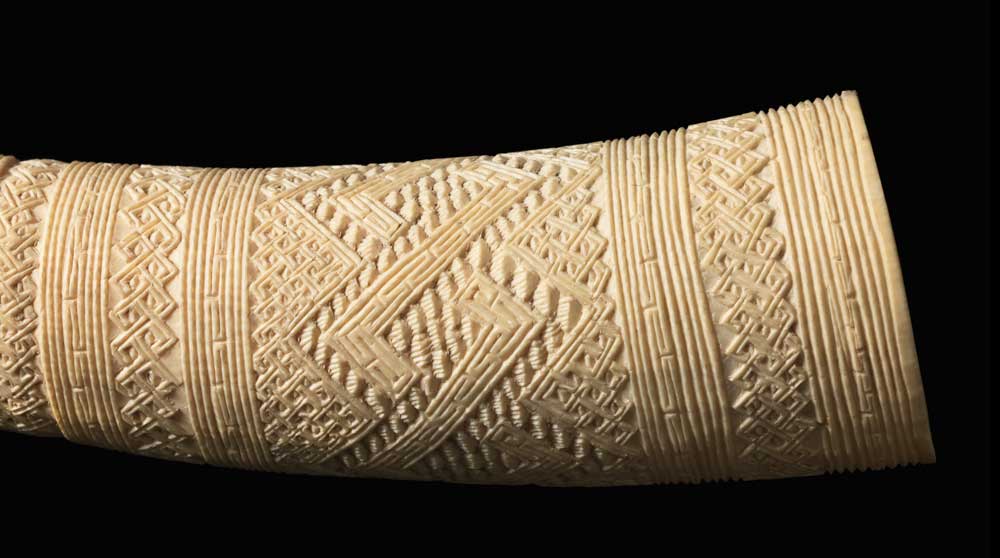
Oliphant, 16th century, inventoried 1887, Republic of the Congo, Angola, Kongo peoples, Ivory, L. 23 1/4 in. (58 cm), Diam. 2 5/8 (6.5 cm), MIBACT–Polo Museale del Lazio, Museo Preistorico Etnografico Luigi Pigorini, Rome



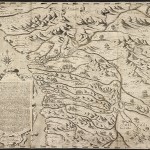
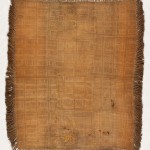
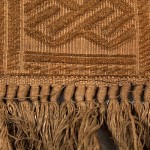
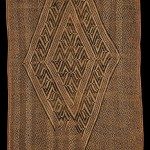

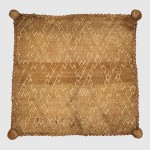
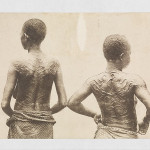
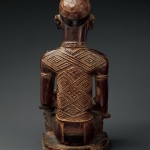

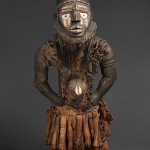
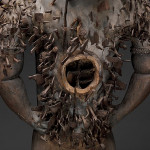
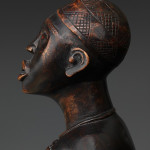
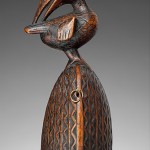
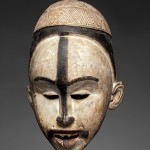
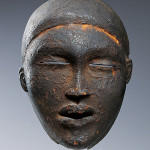
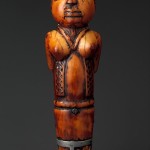

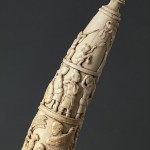
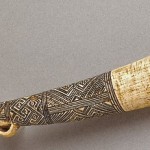
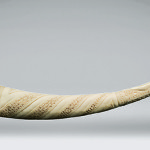

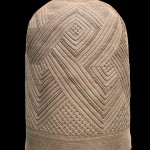
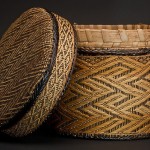

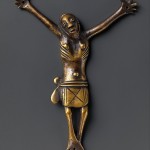










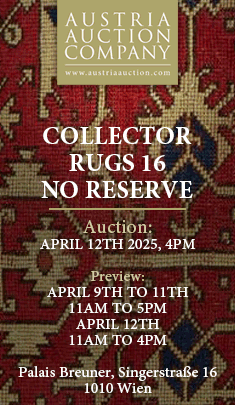













Comments [0] Sign in to comment